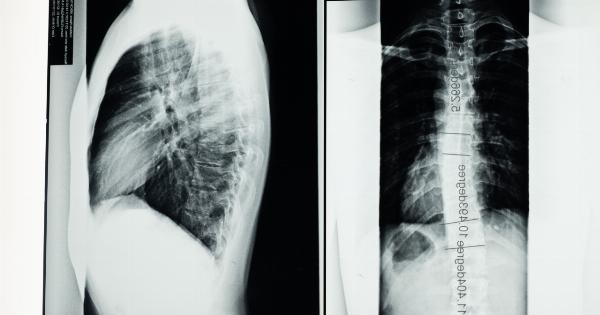The human spine is an incredible structure that provides support and stability to our bodies. However, sometimes issues arise that can lead to abnormal curvatures of the spine, such as lordosis and scoliosis.
Although both conditions involve a curvature of the spine, they are distinct and require different approaches for diagnosis and treatment. In this article, we will explore the differences between lordosis and scoliosis, and how they can be visualized and understood.
What is Lordosis?
Lordosis refers to an excessive inward curvature of the spine, primarily in the lumbar region (lower back) or cervical region (neck). This curvature causes the affected area to curve significantly more than normal, resulting in a swayback appearance.
The condition is often referred to as “swayback” because when a person with lordosis stands, their lower back appears significantly arched, causing the hips and buttocks to protrude.
Causes and Symptoms of Lordosis
Lordosis can be caused by various factors, including poor posture, obesity, muscle imbalances, certain medical conditions, and even pregnancy. Muscular dystrophy, spondylolisthesis, and osteoporosis can also contribute to the development of lordosis.
In some cases, the condition may be present from birth.
The symptoms of lordosis vary depending on the severity of the curvature. Mild cases may not cause any noticeable symptoms, while more severe cases can lead to back pain, stiffness, and decreased flexibility.
Some individuals may also experience problems with balance and mobility.
Visualizing Lordosis
Visualizing lordosis can be achieved through various methods, including X-rays, MRI scans, and physical examinations.
These imaging techniques allow healthcare professionals to assess the degree of curvature and identify any underlying causes or complications. During a physical examination, a healthcare provider may ask the patient to bend forward, helping to assess the curvature visually.
Treatment Options for Lordosis
The treatment for lordosis depends on the severity of the condition and its underlying causes. In mild cases, lifestyle modifications and exercises to strengthen the core and back muscles may be recommended.
Physical therapy can also help improve posture and flexibility.
For more severe cases of lordosis or cases caused by underlying conditions, a healthcare provider may recommend bracing or even surgery.
Bracing involves wearing a specially designed brace to help support the spine and prevent further progression of the curve. Surgery is typically reserved for extreme cases where other treatments have been ineffective, and the curvature is significantly impacting daily life.
What is Scoliosis?
Scoliosis is a condition characterized by an abnormal sideways curvature of the spine. Instead of the spine appearing as a straight line when viewed from the back, it can resemble an “S” or a “C” shape.
Scoliosis can affect people of all ages, but it most commonly develops during adolescence.
Causes and Symptoms of Scoliosis
The causes of scoliosis are generally unknown and can vary. Some cases are classified as idiopathic, meaning there is no identifiable cause.
Other potential causes include congenital disabilities in which the spine doesn’t develop correctly before birth, muscular diseases, neuromuscular conditions, or injuries that affect the spine.
Scoliosis symptoms can range from mild to severe and may include an uneven waistline, one shoulder blade protruding more than the other, uneven shoulders, or a leaning to one side.
In some cases, scoliosis may lead to pain and difficulty with physical activities.
Visualizing Scoliosis
To visualize scoliosis, healthcare professionals often use X-rays or physical examinations. An X-ray provides a clear image of the spine from different angles, allowing doctors to measure the degree of curvature using the Cobb angle method.
During a physical examination, a healthcare provider may use a scoliometer, a small handheld device, to measure the degree of spinal curvature.
Treatment Options for Scoliosis
The treatment for scoliosis depends on the severity of the curvature, the age of the patient, and the risk of progression. Mild cases may require monitoring to ensure the curvature does not worsen over time.
Physical therapy and specific exercises can also help improve flexibility and muscle strength.
In more severe cases or cases where the curvature is progressing rapidly, bracing may be recommended. A brace provides external support to the spine, helping to slow down or prevent further curvature progression.
Surgery is typically reserved for severe cases where the curvature is severe, rapidly progressing, or causing significant pain or impaired function. Surgery involves the use of rods, screws, and bone grafts to straighten and stabilize the spine.
Conclusion
While both lordosis and scoliosis involve abnormal curvatures of the spine, they are distinct conditions with different causes and treatment options.
Lordosis primarily affects the lumbar or cervical region, leading to an excessive inward curvature, or swayback posture. On the other hand, scoliosis is characterized by a sideways curvature of the spine, often resembling an “S” or a “C” shape.
Accurate visualization and understanding of these conditions are essential for correct diagnosis and appropriate treatment.
Healthcare professionals use various methods such as X-rays, MRI scans, and physical examinations to assess and quantify the degree of curvature. Treatment options range from conservative measures like lifestyle modifications, exercises, and bracing to surgical interventions for severe cases.
If you suspect you or a loved one may have lordosis or scoliosis, it is crucial to consult with a healthcare professional for a proper evaluation and personalized treatment plan.
Early detection and intervention can significantly improve the outcomes and quality of life for individuals with these spinal conditions.





























